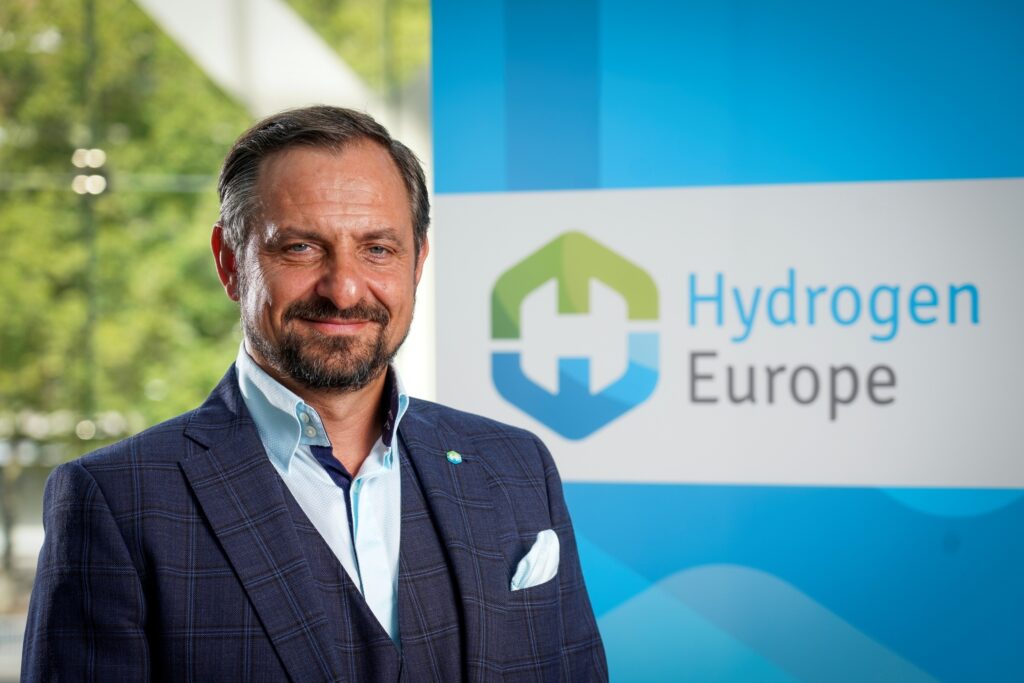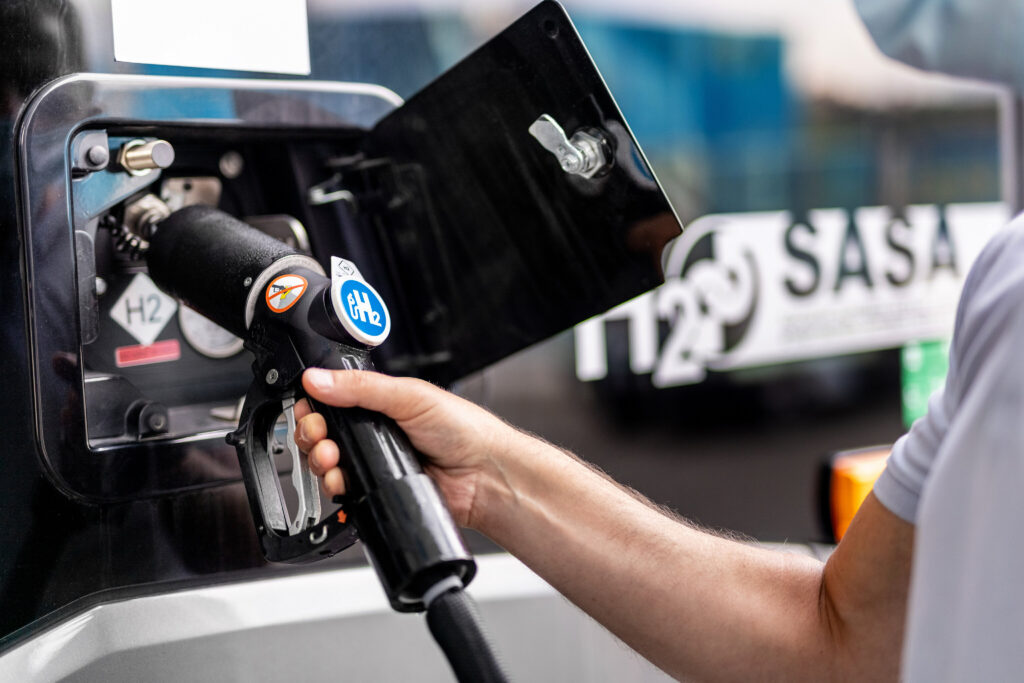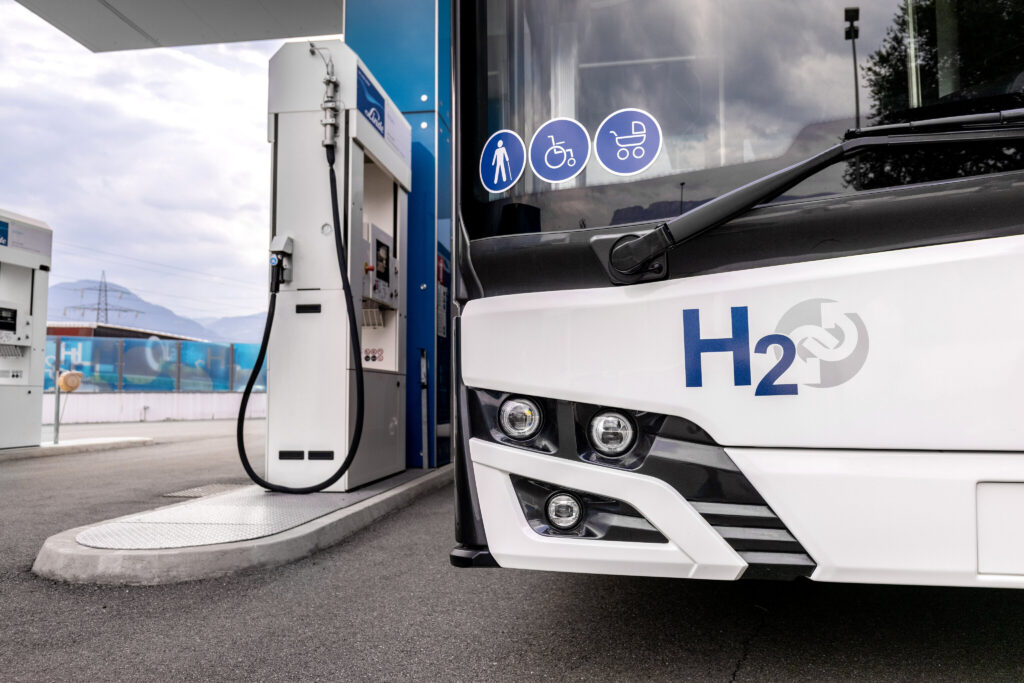
The hydrogen industry:
an interview with Jorgo Chatzimarkakis
We talk to Jorgo Chatzimarkakis, CEO of Hydrogen Europe, about the European hydrogen landscape, the technological challenges of the fuel of the future, and how to effectively address them.
What is Hydrogen Europe about?
Jorgo Chatzimarkakis: Hydrogen Europe is a trade association that aims to accelerate the development of the European hydrogen industry and thus propel global carbon neutrality. Our members are like-minded European organisations who support the delivery of hydrogen and fuel cells technologies. We do this to enable the adoption of abundant and reliable energy which efficiently fuels Europe’s low carbon economy.
Could you tell us briefly about the strategic aims of your organization.
JCh: Hydrogen has a strong potential to become an agent of climate mitigation and help decarbonise almost every sector of economy: heavy industry, transport, buildings, and energy. Our objective is to make sure that the European hydrogen industry delivers on the EU’s energy transition and its ambitious carbon neutrality goals in all these sectors.
What needs to happen to achieve this goal?
JCh: It is crucial that the energy transition is accomplished with as much industry endorsement and public support as possible. To this end, the aim of Hydrogen Europe is to foster dialogue and cooperation with all stakeholders: policy makers in Brussels and across the EU, industries, civil society, media, but also our peers within the hydrogen sector. Only by speaking to each other, will we be able to develop a robust hydrogen industry for the benefit of the EU and its citizens.

How does it look today?
JCh: Hydrogen saw an unprecedented development in 2020. From an innovative niche technology, it is fast becoming a systemic element in the European Union’s efforts to transition to a climate neutral society by 2050. This was proved by the publication of the EU Hydrogen Strategy in 2020 and a set of legislative proposals laid out in the Fit for 55 Package in 2021. At the end of 2021, the European Commission published its Hydrogen and Decarbonised Gas Market Package. The mere fact that this file contains hydrogen in its name is a recognition of its potential.
What are the main challenges for hydrogen technologies?
JCh: Today, hydrogen represents a modest fraction of the global and EU energy mix and is still largely produced from fossil fuels. For hydrogen and hydrogen technologies to contribute to climate neutrality, it needs to achieve a far larger scale and its production must become fully decarbonised.
As the EU institutions further shape these initiatives, they should bear in mind one factor: no initiative must create regulatory barriers to the creation of a net-zero economy.
How can we overcome these barriers effectively?
JCh: With an appropriate hydrogen framework in place, 1 million tons of clean hydrogen per year can be produced and at least 6GW of electrolyser capacity will have been installed by 2025 already.
Significantly higher volumes can be achieved with the development of the hydrogen market, which will include blending with natural gas, building hydrogen valleys and stimulating hydrogen production. By 2050, a mature and deep hydrogen market will be in place ensuring a fully decarbonised economy.

What can accelerate the development of hydrogen as part of the energy mix?
JCh: Along with ramping up hydrogen production, the EU should build on existing assets, such as an extensive infrastructure. Its 20,000 km of well-developed gas grid can be converted to accommodate hydrogen at a minimal cost. Additionally, offshore pipelines and depleted oil and gas fields can be used on the one hand to transport renewable hydrogen produced directly offshore and, on the other hand, to store hydrogen.
The hydrogen industry is ready to do its part, but the EU decision-makers have to begin putting into place a concrete and fit for purpose framework for the development of a clean hydrogen economy.
It seems that hydrogen has become or might become a more popular source of energy not only in public transport but also in other industrial applications.
JCh: Hydrogen will play a role in all applications, especially in sectors that cannot be easily electrified, such as heavy-duty, air and maritime transport. The transport sector is likely to be the biggest user of hydrogen in 2050, with more than 50 million tonnes used either directly in fuel cells, or as part of synthetic fuels.
Keeping and developing European industrial leadership in these sectors will be crucial to maintaining jobs and generating growth in Europe.
What is the main focus for Hydrogen Europe at the moment to accelerate hydrogen technologies and deploy them on a large scale?
JCh: At Hydrogen Europe, we are working on making sure regulatory policies at the European level are favourable to the development of hydrogen mobility, such as the Energy Taxation Directive or the Taxonomy Regulation.
Investment in the use of clean hydrogen as a fuel is a crucial driver to ensure the competitiveness of clean hydrogen in gaseous or liquid form to decarbonise the mobility sector. Hydrogen Europe’s team is in close touch with European stakeholders to develop EU standards and regulations that are required to support the use of clean hydrogen and hydrogen-based fuels, including an ambitious review of the Renewable Energy Directive.

We mainly talk about the future. But what is the situation today?
JCh: Hydrogen ambitions are already reflected in a number of national and regional hydrogen plans. For example, France plans to have up to 50,000 light-duty vehicles and up to 2,000 heavy-duty vehicles on its roads by 2028. The Dutch strategy forecasts a 300,000 light-duty hydrogen vehicles fleet as well as a minimum blending rate of 14% of sustainable aviation fuel (SAF) by 2030. The German region of North-Rhine-Westphalia foresees about 500 buses by 2025.
We already see the change happening: the world’s first passenger train powered by a hydrogen fuel cell is already in commercial operation in Austria and Germany, further tests are being conducted on French and Swedish railways. The world’s first zero-emission hydrogen-electric passenger train commercial operation is slated for 2024. At the recent COP26 summit in Glasgow, hydrogen buses took participants to the key conference sites.
What would be your main message to those Public Transport Authorities which consider hydrogen as the potential fuel of the future but are not yet convinced if this is the right direction?
JCh: All of this is to say that technology is rapidly becoming an end users’ favourite to decarbonize public transport operations; public transport operators are commissioning, or have already commissioned, hydrogen-powered city buses and related hydrogen refuelling stations.
Long-distance bus and coach operators can rely on the implementation of the Alternative Fuels Infrastructure Regulation, which mandates targets for hydrogen refuelling stations on the TEN-T networks and in urban nodes. Hydrogen Europe very much supports this approach, as binding geographical targets for road transport refuelling is an essential means of showing public confidence for the hydrogen road mobility. The technology is becoming both cheaper and more efficient, and the higher the demand the faster the transition to zero-emission public transport will be.
This is yet another proof that the time to bet on hydrogen is now.
See also
How does a hydrogen cell work?
A hydrogen fuel cell is nothing more than a mini power plant on board a vehicle. Find out how does a hydrogen cell work!
„Strategic goal: sustainable transport”
Interview with Krzysztof Dostatni, CEO of MPK Poznań.


